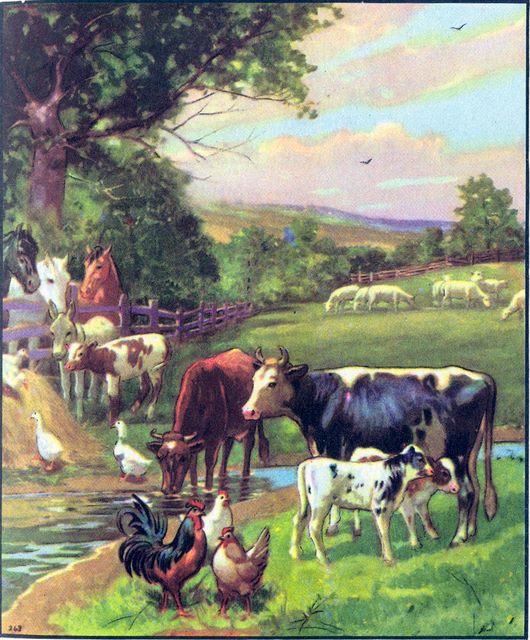
Skin Diseases In Animals
A number of animal diseases have the manifestation of itching which may be relieved by the animal through scratching, rubbing, rolling,, head shaking, licking, feather-picking, cannibalism, baldness, thickening of the skin, loss of the outer layer of skin. Man may contract diseases from domestic animals having itching as a symptom, these include erysipelas, brucellosis, ringworm, lice, mites, scabies, and popular urticaria (small itching skin lesions). (((animal leukemia)))
SALMONELLOSIS AND OTHER DISEASES CAUSING DIARRHEA
Salmonellosis (food poisoning) is a disease characterized by diarrhea, chills, fever, abdominal pain, and sometimes prostration and death. The symptoms may begin anywhere from 7 to 71 hours after eating egg, poultry or dairy products. Frozen, fresh or dried egg products can cause salmonellosis. Practically all eggs contain bacteria. Salmonella germs enter the egg in the oviduct at an immature stage. The wide occurrence of ovarian infection in domestic fowl has come about only in the last few years.
Most cases of salmonellosis do not come to medical attention, and are usually passed off as a cold or flue. A cooking temperature of 350 degrees for 30 minutes is recommended to kill the germ. In one report in 1979, twenty three patients with Salmonella were reported by the Atlanta-based center for Disease Control (CDC), ranging from 6 months to 59 years, the median years being 11 years. Sixteen were females, seven were male. Thirteen lived in one city, nine in another, and one in another area midway between the two cities. Twelve of the patients attended school, but no school had more than four cases. Ninety-one per cent of the patients had fever, and eighty-seven percent had abdominal pain. Nausea and vomiting were also prominent symptoms. Both low fat and whole milk had been consumed by the patients reported by the Center for Disease Control. Salmonellosis has been associated with the consumption of non-fat powdered milk which apparently served as the vehicle in some cases.
Horses are a common source of salmonella infection in man. In one study, 42% of horses used for pleasure riding were found to be “asymptomatic shedders” of salmonella germs. Those who frequent the riding stable may pick up the disease producing germs and either develop the disease or become asymptomatic carriers. The type of Salmonella obtained from horses is the third most common type of salmonella cultured from humans in the United States.
Pet turtles are a well-known source of Salmonella. This includes those certified to be Salmonella-free! Many humans are carriers of Salmonella and can infect birds, turkeys, ducks, and chickens. Feces and urine carry the germ. Humans can get salmonellosis from contact with infected cattle. Salmonellosis in man and animals continues to be an ever-increasing problem.
An epidemic of gastrointestinal disease caused by chocolate milk was found to be due to yersinia enterocolitica.
STAPHYLOCOCCI
Food poisoning from milk and animal products can be caused by staphylococcus toxins, which produces acute gastroenteritis with sever abdominal cramps and collapse, beginning one to six hours after the ingestion of ham, creamy pastries, cheese, milk products, potato salad, or custards. These foods are favored growth places for staphylococci.
There are many infectious diseases that are still transmitted by cattle. In the past such diseases as anthrax, cowpox, brucellosis, foot-and-mouth disease, rabies, actinomycosis, ringworm, herpes, tetanus, gas gangrene, parasites, scarlet fever, diptheria, streptococcal sore throat, and polio have been transmitted to man by cattle or through milk. Milk-born epidemics of infectious disease are an historical fact and are probably much more involved in present epidemics than is recognized.
SALMONELLOSIS
STAPHYLOCOCCI
BRUCELLOSIS
STRPTOCOCCI
HEPATITIS
NEW CASTLE DISEASE
LEPTOSPIROSIS
MULTIPLE SCLEROSIS
ALZHEIMER’S DISEASE
FOOT-AND-MOUTH DISEASE
A. & C. Thrash